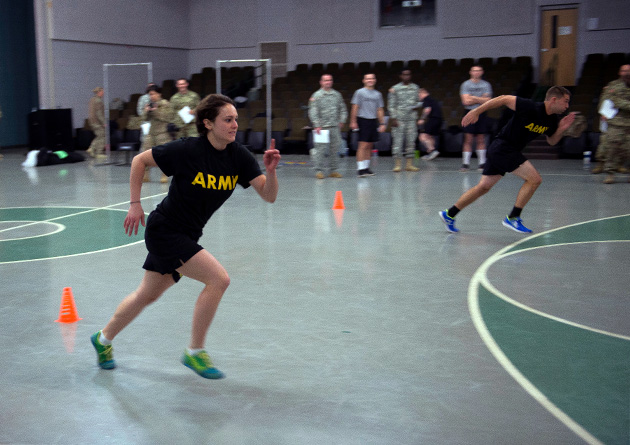The 300 Yard Shuttle Test is a test of anaerobic endurance, in which the participants run 25 yards and back, repeating this for 12 runs of 25 yards (300 yard total).
test purpose: this is a test of anaerobic endurance
equipment required: stopwatch, measuring tape, marker cones, a flat grass surface
pre-test: Explain the test procedures to the subject. Perform screening of health risks and obtain informed consent. Prepare forms and record basic information such as age, height, body weight, gender, test conditions. Measure and mark out the test area. Perform an appropriate warm-up. See more details of pre-test procedures.
 shuttle run test
shuttle run test procedure: marker cones and lines are placed 25 yards apart to indicate the sprint distance. Start with a foot on one line. When instructed by the timer, the player runs to the opposite 25-yard line, touches it with their foot, turns and run back to the start. This is repeated six times without stopping (covering 300 yards total). After a rest of five minutes, the test is repeated.
scoring: Record the average of the two 300-yard shuttles.
target population: suitable for athletes involved in many multi-sprint sports such as basketball, hockey, rugby, soccer.
comments: This is a maximal effort anaerobic test, and in order to receive the highest score the players must sprint at 100 percent effort the entire time. You should encourage the athletes not to pace themselves, the best score is achieved by going hard from the start.
The Test in Action
- This test is part of a battery for the USA Women's Soccer Team
Similar Tests
- 60 yards shuttle — run to 5 yards, 10 yards, 15 yards, there and back, for a total of 60 yards
- 1200m Shuttle Test — to and from a start line to 20, 40 and 60-m marks, 5 times without a break.
- Other shuttle runs: 20 yd agility, 20 yards, 100 yards


 Current Events
Current Events